Off-grid solar setups come in three main configurations: basic, advanced, and hybrid. The basic setup includes solar panels, a charge controller, battery bank, inverter, and load center. Advanced systems add features like battery monitoring, hybrid inverters, and solar trackers for improved efficiency. Hybrid configurations combine solar with a backup generator for reliable power in all conditions. Each system requires careful sizing and component selection based on your energy needs and local climate. When planning your DIY installation, you'll need to take into account factors like daily consumption, peak loads, and seasonal variations to guarantee peak performance. Diving deeper into each setup will help you choose the best option for your off-grid journey.
Basic Off-Grid Solar Setup
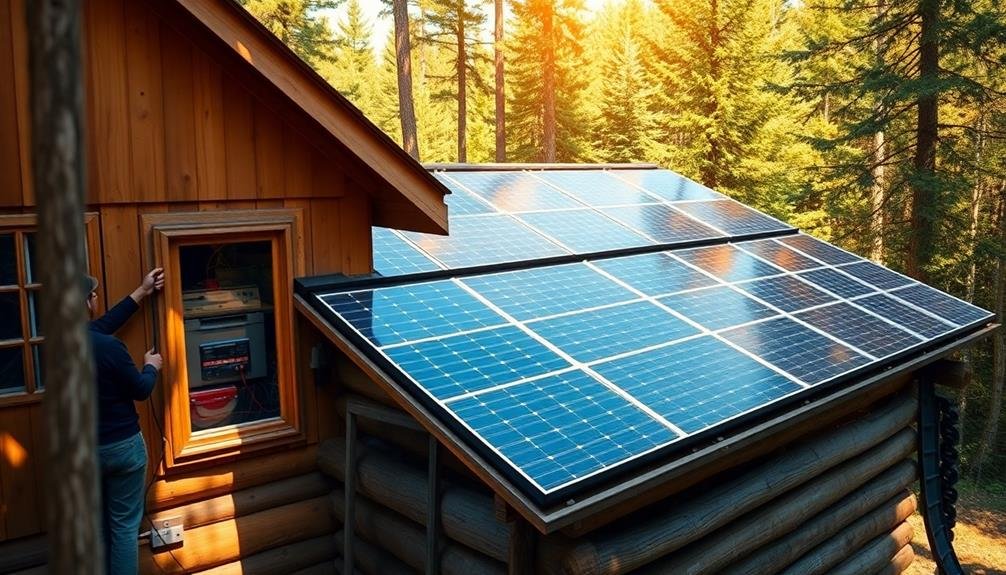
Five essential components make up a basic off-grid solar setup: solar panels, charge controller, battery bank, inverter, and load center.
Solar panels capture sunlight and convert it into electricity. You'll need to calculate your energy needs to determine the number and size of panels required.
The charge controller regulates the voltage and current from the solar panels to the battery bank, preventing overcharging and extending battery life.
Your battery bank stores the energy generated by the solar panels for use when sunlight isn't available. Deep-cycle lead-acid or lithium-ion batteries are common choices.
An inverter converts the DC power stored in the batteries to AC power, which most household appliances use. Choose an inverter that can handle your peak power needs.
The load center distributes electricity to different circuits in your home, much like a standard electrical panel.
When designing your setup, consider factors like your location's solar potential, energy consumption, and budget.
Start with a smaller system and expand as needed. Proper maintenance, including cleaning solar panels and monitoring battery health, will guarantee ideal performance and longevity of your off-grid solar setup.
Advanced Off-Grid Solar System
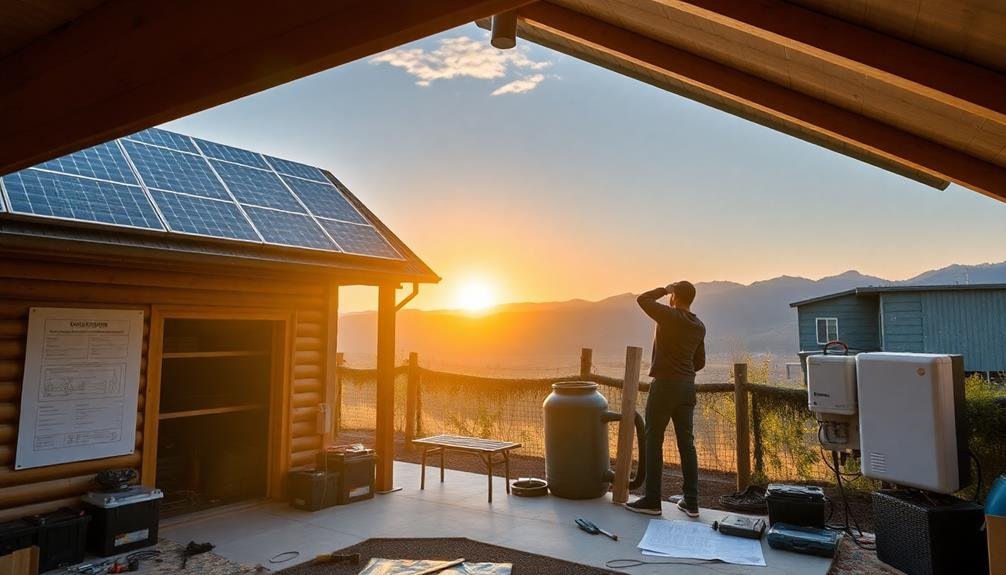
An advanced off-grid solar system builds upon the basic setup, incorporating cutting-edge technologies and additional components to enhance efficiency, reliability, and versatility.
You'll want to add a battery monitoring system to track your energy storage's health and performance. Consider integrating a hybrid inverter, which combines the functions of a charge controller and inverter, streamlining your setup and improving overall efficiency.
To maximize your system's potential, install a solar tracker that adjusts your panels' position throughout the day, increasing energy capture by up to 30%.
Implement a smart energy management system to optimize power distribution and consumption based on your usage patterns. You can also add a backup generator that automatically kicks in during extended periods of low sunlight or high energy demand.
For increased resilience, consider a micro-grid configuration that allows you to connect with neighboring off-grid systems, sharing excess power and improving community energy security.
Hybrid Off-Grid Solar Configuration
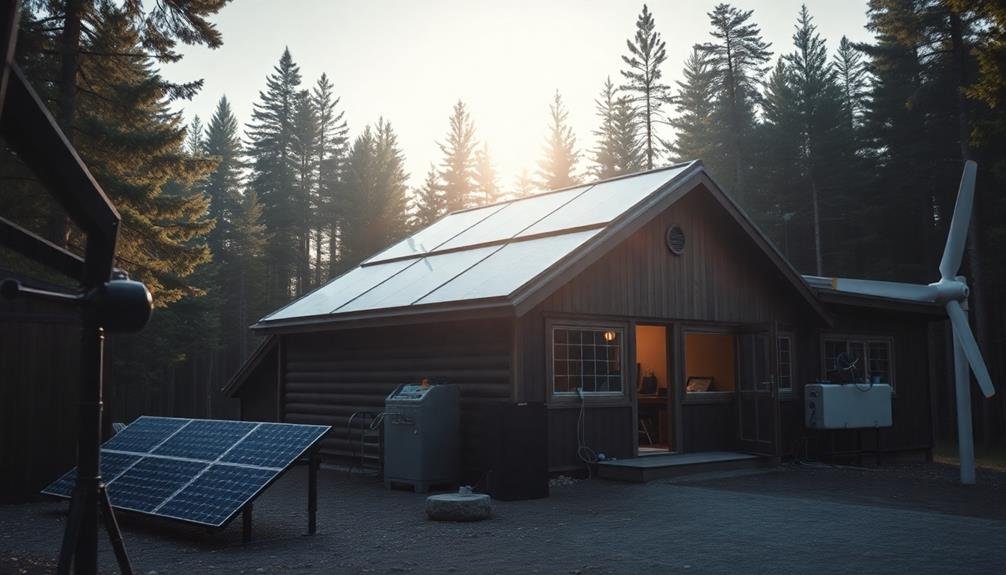
Hybrid off-grid solar configurations offer a versatile solution for those seeking enhanced reliability and flexibility in their power systems. By combining solar panels with a backup power source, typically a generator, you'll have a more robust setup that can handle various energy demands and weather conditions.
In a hybrid system, you'll integrate your solar panels, battery bank, and generator with a charge controller and inverter. This setup allows you to prioritize solar power while having the generator as a fallback option. When solar production is insufficient, the system automatically switches to the generator to charge the batteries or power your loads directly.
| Component | Function | Emotion |
|---|---|---|
| Solar Panels | Harvest sunlight | Hope |
| Battery Bank | Store energy | Security |
| Generator | Backup power | Reassurance |
You'll need to size your components carefully to guarantee peak performance. Consider your daily energy consumption, peak loads, and desired autonomy period. Don't forget to factor in seasonal variations in solar production and potential extended periods of inclement weather. With a well-designed hybrid off-grid solar configuration, you'll enjoy reliable power year-round while minimizing your reliance on fossil fuels.
Frequently Asked Questions
How Do I Maintain and Clean Solar Panels in Remote Locations?
You'll need to regularly clean your solar panels with water and a soft brush. Remove debris, dust, and bird droppings. Check for damage or loose connections. In remote locations, consider using automated cleaning systems or hiring local maintenance services.
What Are the Best Batteries for Extreme Temperature Environments?
For extreme temperatures, you'll want lithium iron phosphate (LiFePO4) batteries. They're reliable in hot and cold conditions. If you're on a budget, sealed AGM batteries are a good alternative. Always protect your batteries from direct exposure to elements.
Can I Use My Existing Home Appliances With an Off-Grid Solar System?
You can use your existing appliances with an off-grid solar system, but you'll need to take into account their power requirements. It's best to opt for energy-efficient models and limit high-wattage devices to guarantee your system can handle the load.
How Do I Protect My Solar Setup From Wildlife and Environmental Hazards?
To protect your solar setup from wildlife and environmental hazards, you'll need to install fencing, use protective covers, and secure wiring. Consider weatherproof enclosures, lightning arrestors, and regular maintenance. Don't forget to trim nearby vegetation and clean panels regularly.
What Permits or Regulations Should I Consider for Off-Grid Solar Installations?
You'll need to check local building codes, zoning laws, and electrical regulations. Don't forget to obtain necessary permits for construction and grid connection. Some areas may require inspections or have specific requirements for off-grid systems. Always comply with regulations.
In Summary
You've now explored three excellent off-grid solar setups, from basic to advanced and hybrid configurations. With this knowledge, you're well-equipped to choose the system that best fits your needs and budget. Remember, proper planning and installation are essential for peak performance. Don't hesitate to consult professionals if you're unsure. By embracing off-grid solar, you're not only gaining energy independence but also contributing to a more sustainable future. Go ahead and start your solar journey today!

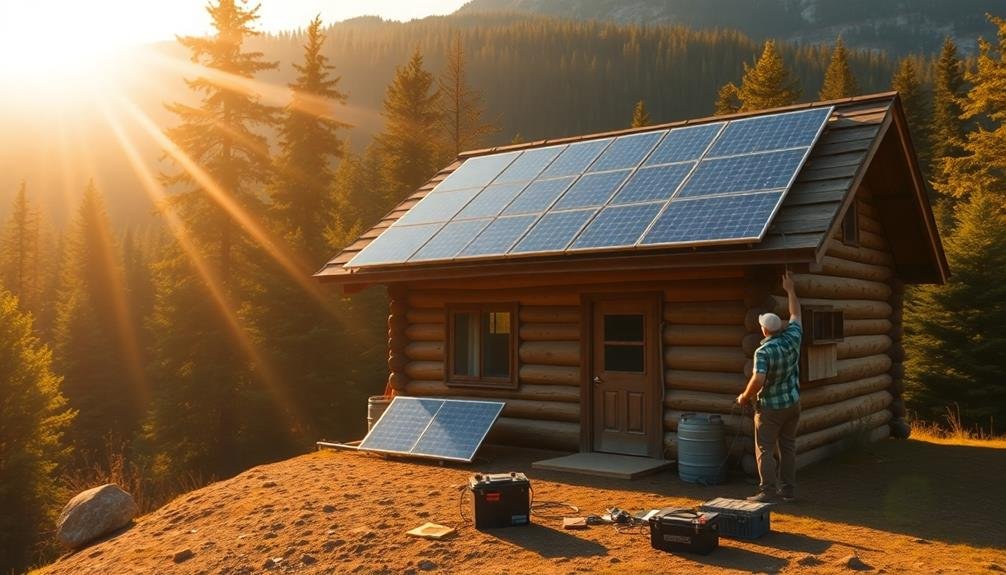
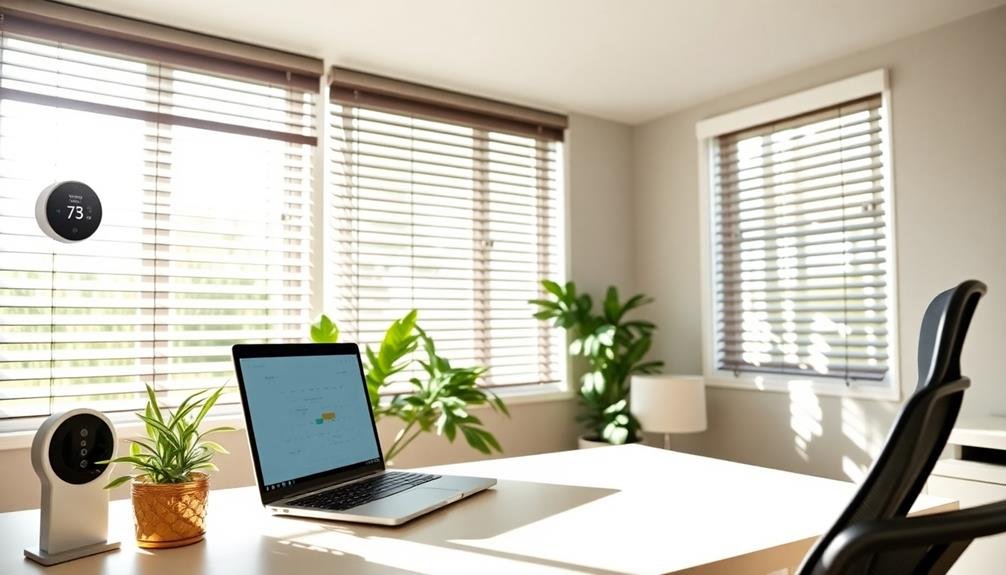
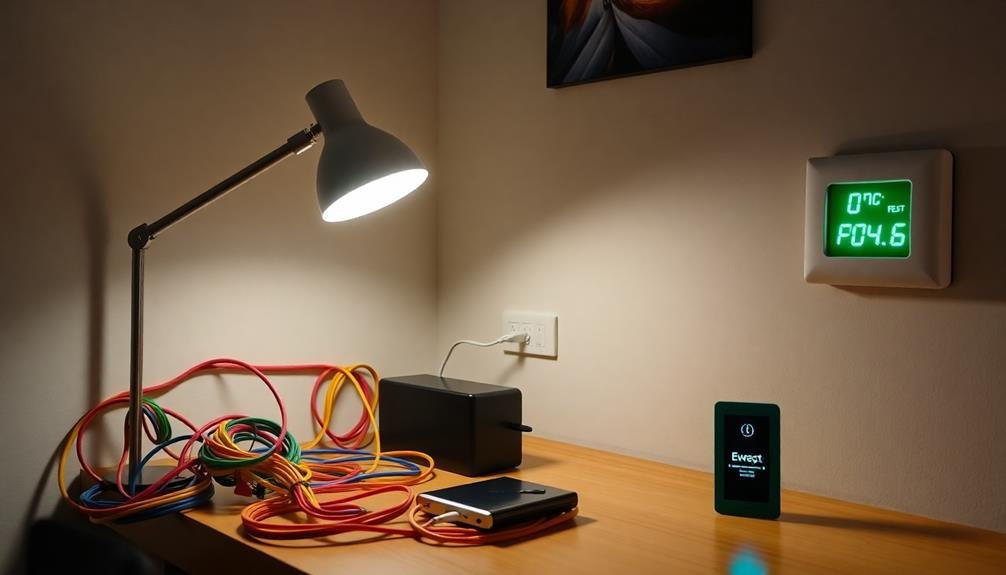
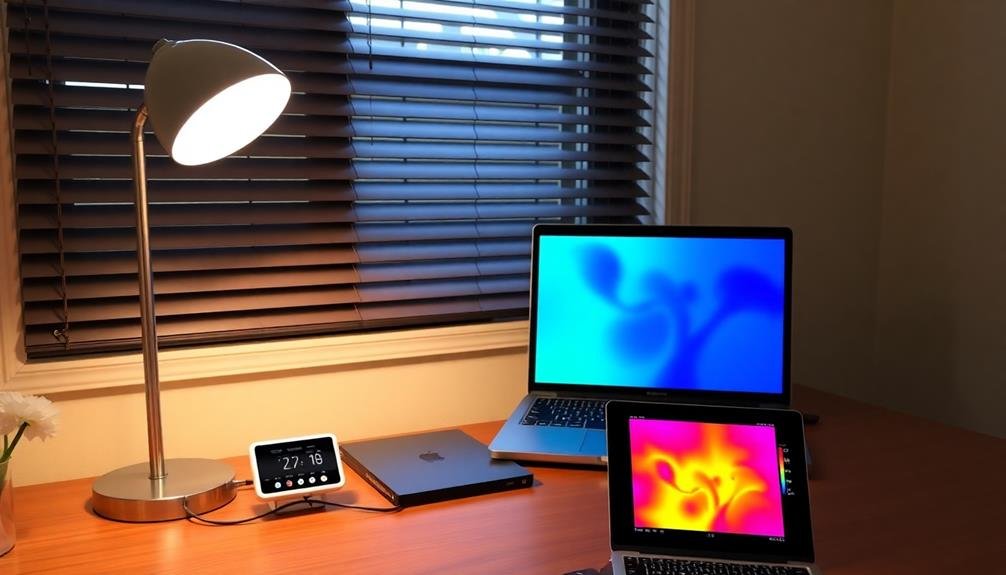
Leave a Reply